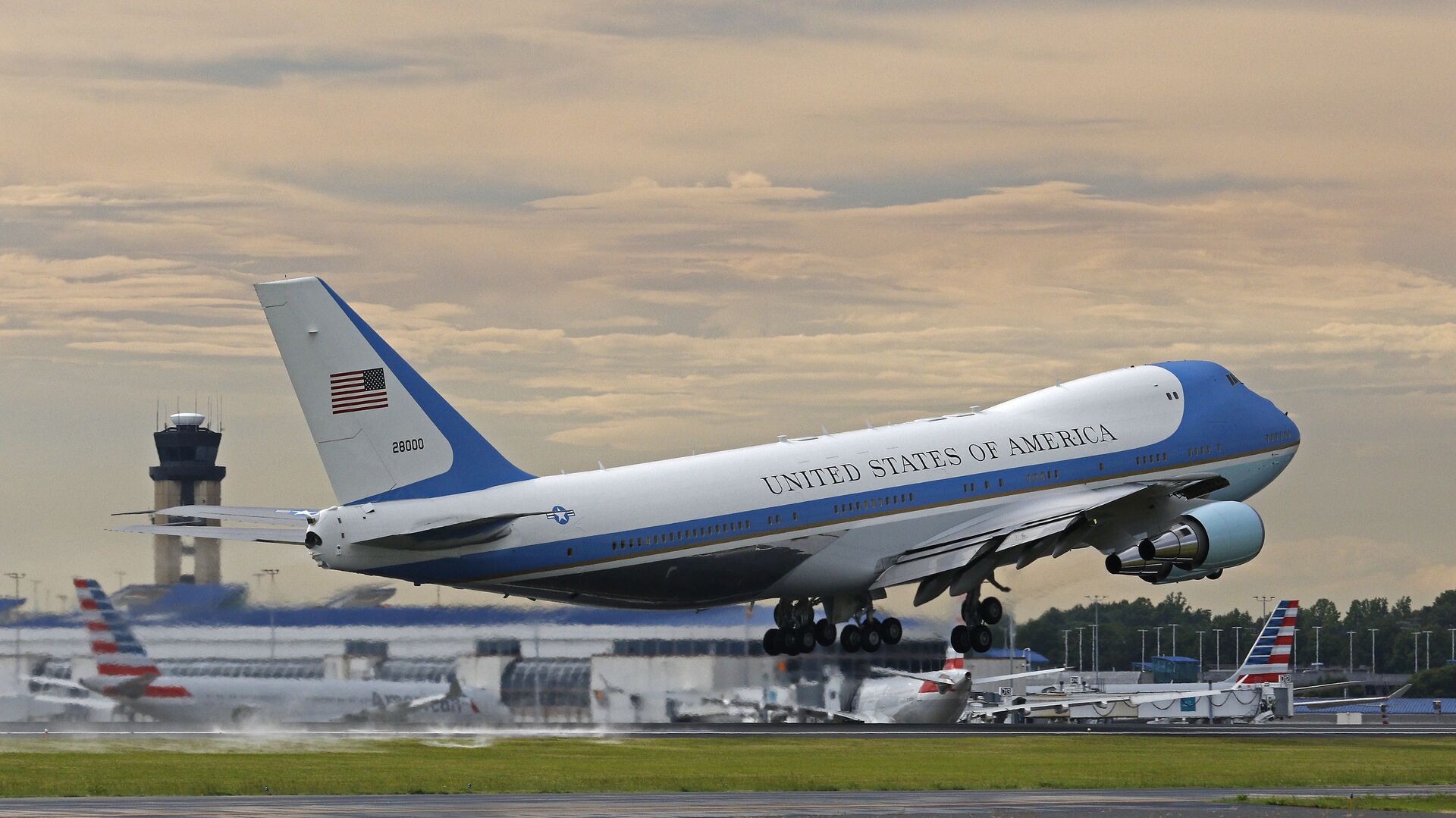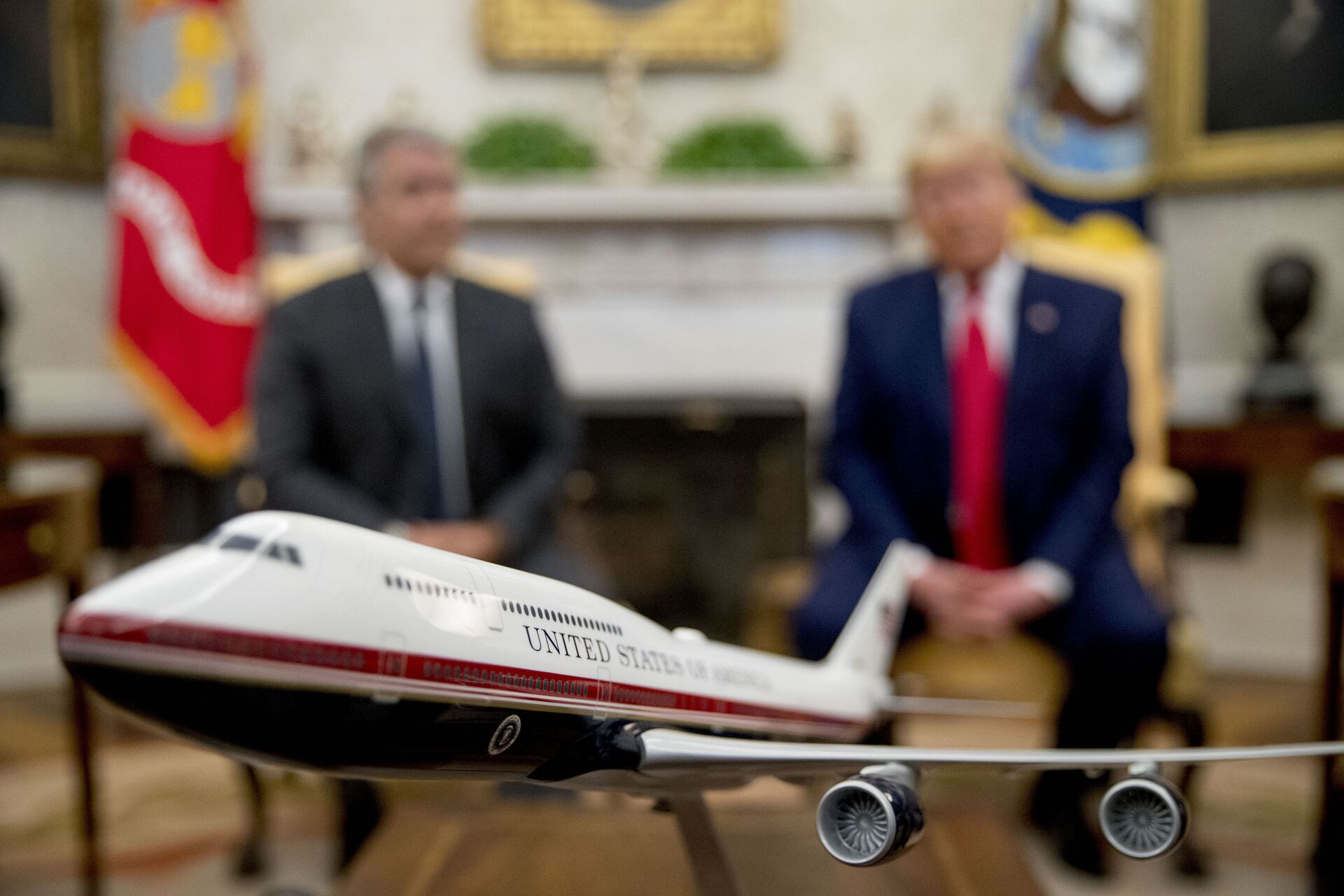Boeing CEO Reveals Trump’s Air Force One Contract Renege Cost Firm $1.1 Billion
23:20 GMT 27.04.2022 (Updated: 18:26 GMT 03.11.2022)

© AP Photo / Bob Leverone
Subscribe
Boeing reported a staggering $1.3 billion loss in its first quarter of 2022, which CEO Dave Calhoun said was almost entirely caused by its contract for the new Air Force One jets. The rest derived from the T-7A Red Hawk trainer aircraft the firm is building for the US Air Force.
According to Calhoun, $1.1 billion of that shortfall is due to costs associated with the two highly modified 747 jumbo jets custom-built for the president of the United States.
“Air Force One I’m just going to call a very unique moment, a very unique negotiation, a very unique set of risks that Boeing probably shouldn’t have taken,” Calhoun told analysts on Wednesday, according to CNBC.
“But we are where we are, and we’re going to deliver great airplanes,” he said, “and we’re going to recognize the costs associated with it.”
Technically speaking, any fixed-wing US Air Force aircraft holding the US commander-in-chief is given the callsign Air Force One, but colloquially, the name is applied to the VC-25, a heavily modified version of Boeing’s 747 passenger jet designed to accommodate the president and his staff. It includes meeting rooms and secure facilities, as well as a variety of countermeasures to help it survive aerial attack, and is purported to be hardened against the electromagnetic pulse generated by a nuclear explosion as well.
The VC-25As presently in service are 747-200s and were built in the late 1980s, making them both aged and expensive to operate. Boeing had a $4 billion contract to build two new VC-25Bs out of update 747-800 aircraft, but in 2018, then-US President Donald Trump abruptly canceled it, calling the bill “out of control.”
The new contract was for $3.9 billion, but forced Boeing to eat all overrun costs, including spare parts and other equipment, training for the aircraft crew, and construction of two new hangars at Joint Base Andrews, a large military facility in suburban Maryland. Altogether, that adds another $1.4 billion to the project. Boeing’s contract to build KC-46 Pegasus aerial tankers for the Air Force contains a similar cost overrun clause.

A model of the new Air Force One design sits on a table as President Donald Trump, right, meets with Colombian President Ivan Duque, left, in the Oval Office of the White House, Monday, March 2, 2020, in Washington.
© AP Photo / Andrew Harnik
The new Air Force One deal was agreed to by Calhoun’s predecessor, Dennis Muilenburg, who was fired by Boeing in December 2019 for his handling of two crashes by Boeing 737 Max aircraft due to a design flaw the company knew about but neglected to inform airlines of. The crashes killed 346 people.
However, on the Wednesday call, Calhoun blamed inefficiencies caused by the COVID-19 pandemic for the cost overruns, saying they had been particularly acute for the VC-25B project.
“In the defense world, when a COVID line goes down, or a group of workers steps out, we don’t have a whole bunch of cleared people to step into their shoes,” Calhoun said. “It has always been a tougher implication, and for the VC-25B where the clearances are ultra high, it’s really tough. So we just got whacked in a number of different areas.”
Despite the issues with the VC-25B, in 2020 the Air Force signed contracts to begin designing both supersonic and hypersonic successors to the aircraft, although no such aircraft currently exist.
